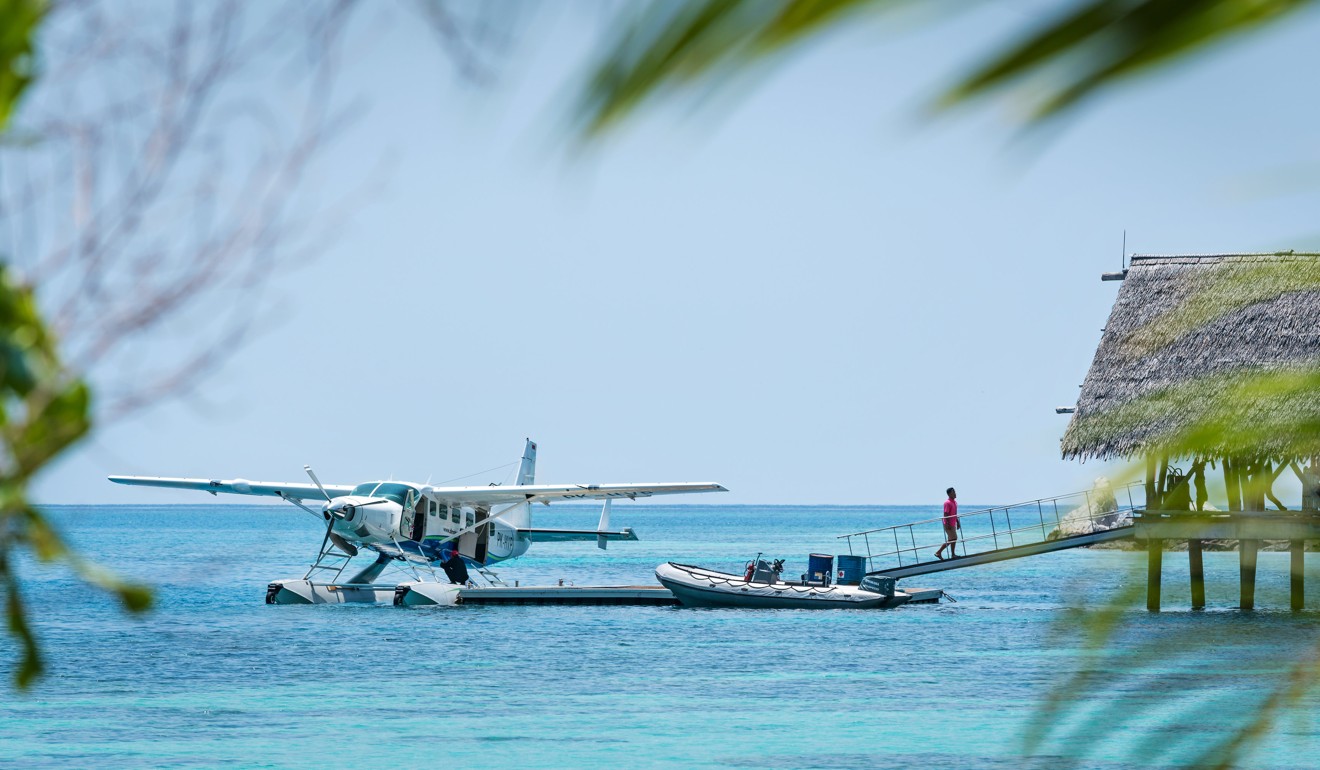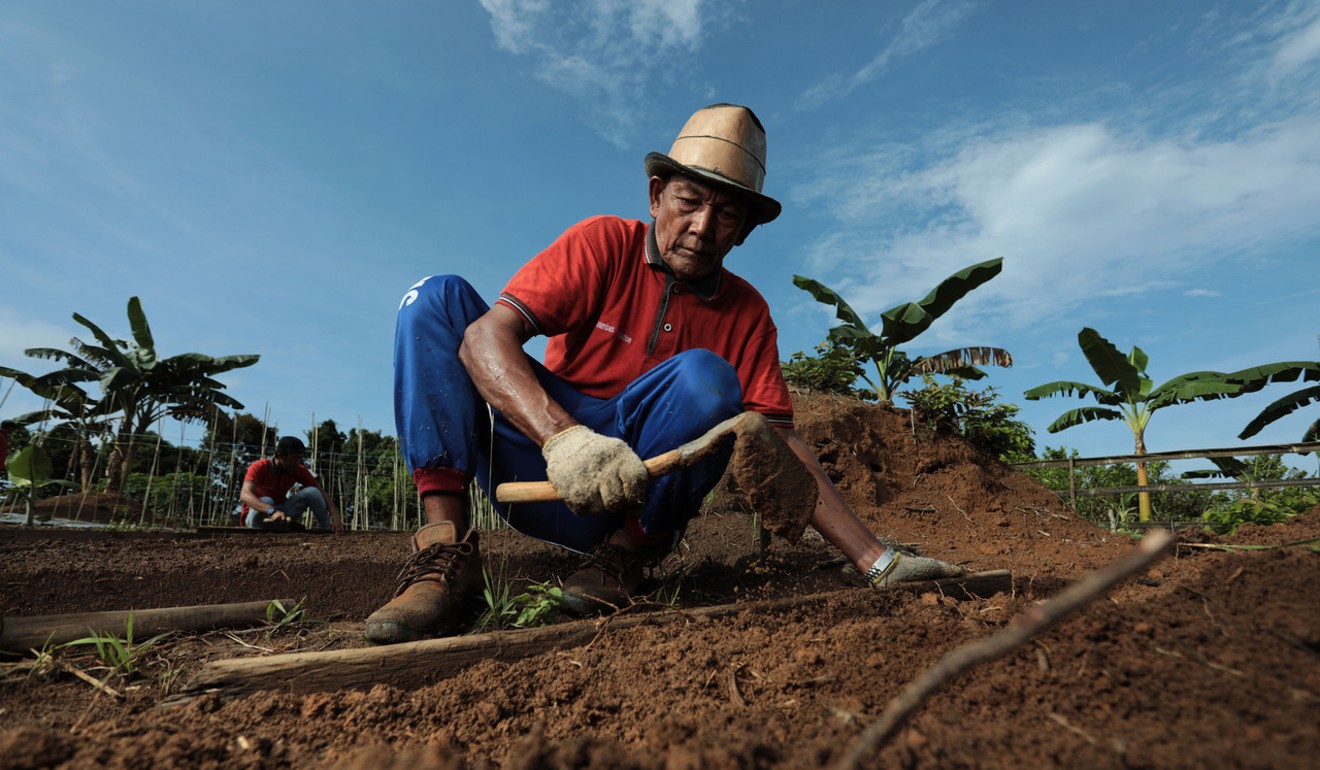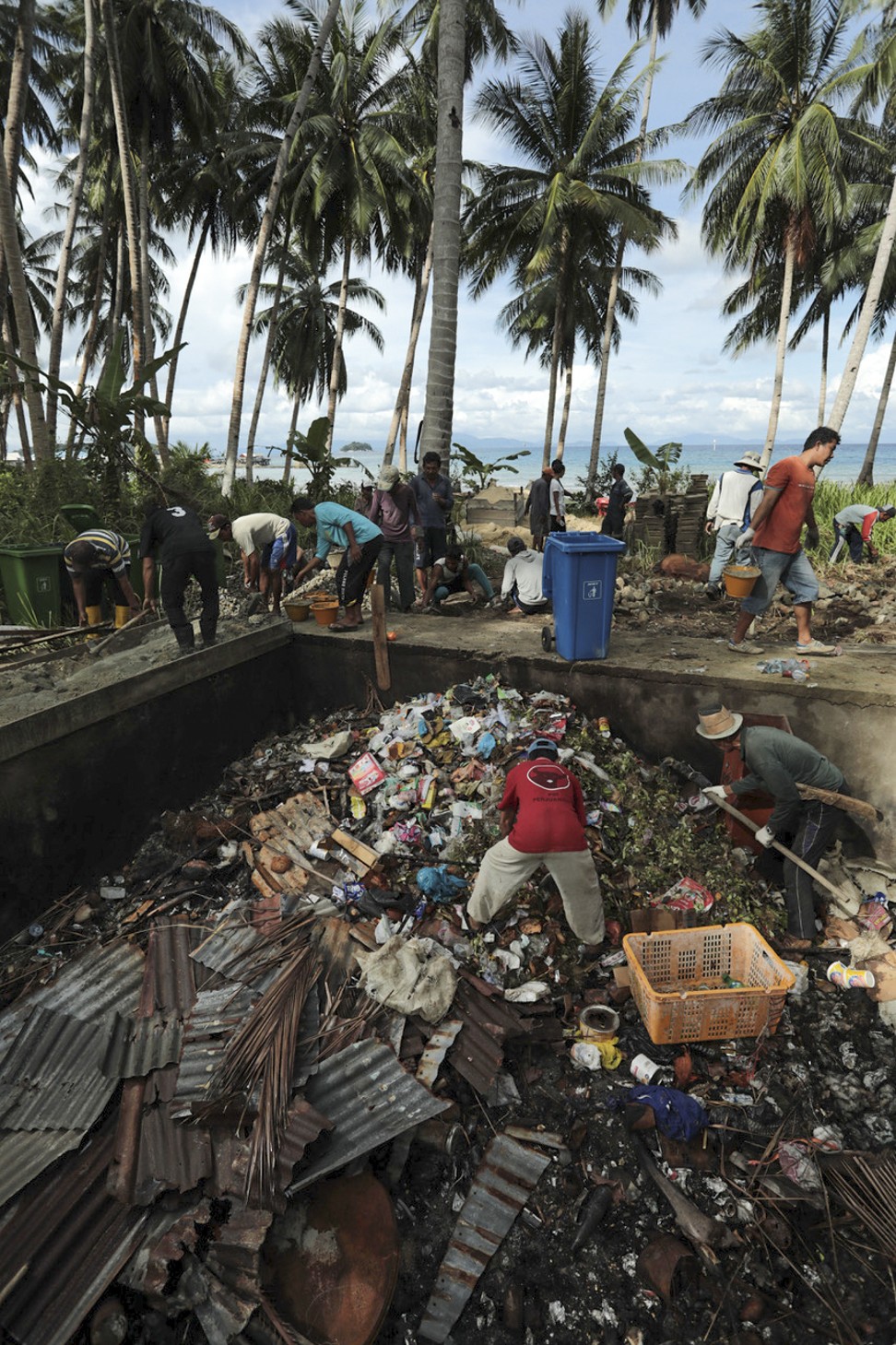
Bawah Reserve, South China Sea private-island resort that is giving back to the local community
- Indonesian luxury resort 300km northeast of Singapore is helping islanders foster an eco-tourism industry
- The recently launched Bawah Anambas Foundation teaches sustainable practices like organic farming and marine conservation
As green shapes on an expansive blue horizon morph into blobs of land, I fancy I’m an explorer leading an expedition by seaplane. Looking down the aisle and out of the cockpit window, I see the remnants of an ancient volcano.
Some of the six islands we are approaching are flat and crescent-shaped, others towering out of the ocean like misplaced, jungle-clad pyramids – a lost world. I half expect to see a pterodactyl fly past the windscreen.
The aircraft banks to reveal three sheltered lagoons in startling turquoise, fringed with white beaches. A spray of seawater signals touchdown. As we taxi towards the Bawah Reserve jetty, corals, fish and outlandish giant clams are clearly visible through the window.
The luxury resort encompasses 35 over-water and beach suites on Bawah Island, the largest of the six, which are part of Indonesia’s Anambas Islands, about 300km northeast of Singapore.
The reserve has been open for just over a year, and is majority owned by Tim Hartnoll, 63, a Briton who was born and raised in Singapore, where he works as a shipping entrepreneur, and who long dreamed of having his own island.
“Owning an island is meaningless unless you build the infrastructure to get there and live there, and if you’re going to do all that, you may as well make it a business,” he tells Post Magazine.
In November, he launched the Bawah Anambas Foundation, aimed at improving the livelihoods of those on neighbouring islands, in particular Telaga, Mengkait and, the closest of the three, Kiabu, which is two hours north of Bawah by supply boat. Hartnoll explains why contributing to social and environmental sustainability on the islands is important.

“One of my hobbies as a child was collecting butterflies, and that got you out into nature,” Hartnoll says. “I’ve seen the destruction of the Malaysian jungle and its conversion for palm oil production in my lifetime. But as soon as you invest in an island and engage with the community, you’ve got the platform to make a change.”
Pulau Bawah itself was uninhabited before Hartnoll arrived, although not completely untouched. In the 1920s and 30s, timber was extracted from the island and a coconut plantation was established; in recent years the surrounding waters have been fished illegally by locals and fishermen from Kalimantan.
Hartnoll hired an Indonesian, Jerry Winata, to helm the Bawah Anambas Foundation, providing a link in community relations, and Winata’s right-hand man, Ridho Hudho, is a true local, hailing as he does from Kiabu.
Until recently, Hudho says, it was considered normal by Anambas islanders to throw plastic rubbish into the ocean. And dynamite was used to kill fish for food, destroying coral reefs in the process. Hudho is now assisting his people to find a “new normal”.

“This has never been done before,” says Winata. “No one has ever provided development assistance to these people.” To better understand their challenge, Winata and Hudho spent two months living in the villages. With their guidance, the foundation now focuses on community development and the conservation of marine and forest environments.
To help fishermen supplement their income by organically farming the land, for instance, the foundation provides a trainer, facilities, equipment and zero-interest loans. The first harvest on Telaga was of a green vegetable known as kangkong, and it yielded an encouraging 100kg crop, of which the farmers kept half, selling the rest to Bawah. Programmes are expected to be expanded this year to include women-only initiatives.
“You give men money, it will become cigarettes,” Winata laughs. “You give women money, it will become your children’s education and better food.”

The foundation also provides a free digital English-skills programme aimed at assisting islanders to find jobs in the tourism industry. The Indonesian government is promoting the potential of the Anambas chain and offering incentives to tourism operators, with the number of hostels and homestays slowly increasing across the 250 islands.
“The villagers are watching with interest that tourists want to come to Bawah,” Winata says. “I tell them, ‘I’d love to bring tourists to your village, but with all this garbage and broken coral, I cannot.’”
The foundation offers education on plastic-waste disposal and provides equipment for storing recyclable waste. Some recyclables will be upcycled into building products on Kiabu and some are transported to processing facilities in Batam, to the south of Singapore.
The Anambas Islands district covers 46,667 sq km of the South China Sea, and 12,617 sq km of that is a poorly policed marine park. Bawah Reserve protects its waters; fishing is prohibited within 500 metres of the shoreline, with resort staff explaining marine park boundaries to fishermen who come too close, and the resort has banned the dropping of anchors, has installed mooring buoys to prevent damage to coral and, according to Hartnoll, has so far removed about 16 tonnes of discarded fishing nets and plastic from local reefs.

Forests have also suffered. Many islands have been illegally logged, leading to deadly landslides and affecting tourism potential. In collaboration with the local government, the foundation plans to establish a two-hectare indigenous-tree nursery and education facility on Jemaja, one of the hardest-hit islands.
While the remoteness is a drawcard for adventurous tourists, it is the foundation’s biggest challenge. “For my supply boat to come from Batam to Bawah with equipment or supplies, it takes 24 hours,” says Winata.
Linking Bawah’s guests to the foundation’s activities is also complicated by distance, although Winata hopes this year to initiate a full-day trip, including snorkelling or diving, to show off some of the work it is doing.
“We really want to take guests to the villages,” he says. “Visit an organic garden, have a farm-to-table lunch and enjoy the beautiful beaches and scenery.”

Not that guests have to leave the resort to see conservation in action; two marine biologists are tending a coral nursery in the Bawah lagoon, an undertaking that can be snorkelled over and which is intended to serve as a pilot project for the rehabilitation of damaged reefs elsewhere in the Anambas chain. Endangered hawksbill and green turtles nest in significant numbers on Sanggah Island, adjacent to Bawah, and this year, a programme to protect eggs from predators will be introduced.
Resort operations are also a case study in sustainability, and head of engineering Ketut Wijaya leads guests on a tour of the organic permaculture gardens.
Wijaya beams as he strolls through a vine-covered trellis tunnel groaning under the weight of pumpkins, and explains how food waste is converted into fertiliser.
Sewage treatment plants eventually empty into ponds stocked with catfish, and waste water is recycled for toilet-flushing and gardening. All drinking water is sourced from rainwater and treated seawater, and solar power is used for water heating. Guests will be hard pressed to spy any single-use plastics, and even the in-room mosquito repellent and sunscreen are eco-friendly.

Resort activities celebrate nature, and a highlight of any stay is the romantic picnic on a private island, complete with snorkelling equipment and a double kayak.
I dive with inquisitive reef sharks, huge bumphead parrot fish and relaxed turtles. After one plunge, my instructor and his offsider disappear back underwater, emerging a few seconds later with a tangle of fishing net, a threat to sea life no longer.
On the final morning, I hike up the steep trail behind the resort. I’m puffing as I behold the chic resort and magnificent lagoons below, before continuing down the forest trail to Bawah’s northern cliff. Some 40km distant across an empty ocean, Kiabu sits lonely on the horizon. As I stare, I consider the isolation and meagre opportunities of that “lost world”, and how the efforts of the Bawah Anambas Foundation might be helping it become found.

